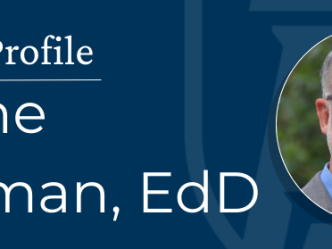Many people gained a basic understanding of the importance of disease surveillance during the COVID-19 pandemic. To public health professionals, monitoring the status of diseases has always been a critically important task. A 2024 report in Frontiers in Public Health noted that disease surveillance helps public health professionals do the following:
- Determine the scale and timing of a response to a public health risk
- Select the medical and nonmedical measures to use in addressing risks
- Design and implement alert systems to promote risk awareness
- Choose the communication strategies they will use to notify citizens about public health risks
Anyone who has been considering developing their public health skills by earning a certificate in public health can benefit from learning about disease surveillance and the important role it plays in protecting the public’s health.
What Is Disease Surveillance?
At its highest level, disease surveillance is the process of gathering, analyzing, interpreting and distributing information about illnesses and other health-related matters.
Conducting disease surveillance activities helps public health officials plan and implement strategies to protect the public’s health. Disease surveillance also helps public health officials know with whom they need to share information from surveillance activities and when they need to share that information.
Health Issues That Can Benefit From Disease Surveillance
Disease surveillance techniques can be used to monitor infectious diseases such as COVID-19, severe acute respiratory syndrome (SARS) or Middle East respiratory syndrome (MERS).
But disease surveillance also can be vital in monitoring chronic health issues such as:
- Alcohol-related diseases
- Alzheimer’s disease
- Cancer
- Diabetes
- Issues related to reproductive health
The Overall Goals of Disease Surveillance
Disease surveillance is used for two main purposes: to make decisions and to provide early warning information about a potential or emerging health issue.
For example, public health officials use information gathered through disease surveillance to make decisions about specific actions such as:
- Testing processes
- Quarantine policies
- The timing of vaccines
They also use disease surveillance data to provide early warning information through measures such as:
- The use of automated bulletins, dashboards and websites that provide information about health issues
- The establishment of alert confirmation systems that connect personnel in the field, surveillance professionals and laboratory professionals in real time
What Are Disease Surveillance Processes?
A 2025 report in the journal Medicine Plus outlined many of the processes that public health professionals use to conduct disease surveillance. Examples of those processes are described below.
Passive Surveillance
Passive surveillance relies on health care providers to submit routine reports that identify diseases they encounter while providing medical care. These reports can cover large populations, but their effectiveness can be affected by delays in reporting and underreporting.
Active Surveillance
To employ active surveillance, public health authorities make proactive contact with health care providers and review patients’ health records. Active surveillance can provide more accurate information than passive surveillance does, but it also requires more resources.
Sentinel Surveillance
Sentinel surveillance involves only a sample of sources reporting all cases related to specific health conditions. These reports can identify trends in the health of an entire population, but they may be less useful in identifying rare health events.
Population-Based Surveillance
Population-based surveillance is used to monitor the incidence and prevalence of a disease across a country’s population or a subset of a country’s population. This type of monitoring can produce more generalizable data than sentinel surveillance does, but it also can have more issues with the quality of its data.
Indicator-Based Surveillance (IBS)
Indicator-based surveillance involves gathering data regarding specific indicators, such as case numbers, mortality rates or hospitalizations. This data is helpful in tracking diseases that are known, but it may not be as effective in identifying new diseases.
Event-Based Surveillance (EBS)
Event-based surveillance entails amassing data from formal disease reporting sources as well as gathering data from sources such as media reports and social networks. While this data can be helpful in quickly detecting the incidence of disease, it also is subject to false conclusions based on unreliable information.
Syndromic Surveillance
Syndromic surveillance is the monitoring of patients’ symptoms to detect potential diseases even before health care professionals make diagnoses based on those symptoms. While this information is useful for early detection of diseases, it can lead to false conclusions.
Laboratory-Based Surveillance
Laboratory-based surveillance uses techniques such as genomic sequencing and serological tests to identify pathogens. While these techniques are effective in identifying pathogens, they require sufficient laboratory resources and expertise.
The Role of Public Health Professionals in Disease Surveillance
Public health professionals play a key role in disease surveillance. For example, they are instrumental in doing the following:
- Monitoring the results of surveillance processes and detecting early indications of a disease outbreak
- Collecting additional samples based on surveillance to obtain more information about a potential risk to the public’s health
- Conducting contact tracing to identify individuals who have been in contact with people who are ill in an effort to halt the transmission of a disease
- Developing interventions to reduce the incidence of a disease or mitigate the effects of a disease
- Providing disease education and screenings services to give citizens information on health issues and offer early detection of a disease
- Crafting public health policies that promote health and prevent disease
Public Health Professionals Who Support Disease Surveillance
Professionals working in a number of public health roles play a vital part in supporting disease surveillance efforts. From positions in informatics to those in epidemiology, there are a number of avenues public health professionals can pursue if they want to be involved in disease surveillance. For example, individuals can become:
- Biostatisticians, who apply their expertise in areas such as statistical modeling and forecasting to generate valuable information that can be used in public health decision-making
- Social and community service managers, who oversee programs that promote behaviors and opportunities that can improve the public’s well-being and health
- Health education specialists, who educate the public about risks to their health and contribute to communication strategies regarding ongoing health issues
- Epidemiologists, who research the causes of disease, the spread of disease and how to control or prevent disease
In addition to pursuing a specific public health career, individuals who have a passion for working in an area such as disease surveillance can benefit from expanding their public health skills and acquiring specific new skills that are valuable in the field.
Disease Surveillance Is a Critical Component of Public Health
Conducting disease surveillance helps public health professionals detect, control and prevent disease. By relying on a variety of surveillance processes, public health officials can have the information they need to make informed decisions that strengthen their responses to public health risks.
People who want to enhance their expertise in public health can explore Augusta University Online’s Certificate in Public Health program to learn how it can help them reach their career goals. Helping students develop their knowledge and skills in key areas such as health management, biostatistics and epidemiology, the program provides individuals with the opportunity to establish a foundational understanding of the field of public health.
Start enhancing your public health credentials today by enrolling in the certificate program at AU Online.
Recommended Readings
How to Advance Your Skills in Public Health
What Can You Do With a Public Health Certificate?
What Does an Epidemiologist Do?
Sources:
The Conversation, “Public Health Surveillance, From Social Media to Sewage, Spots Disease Outbreaks Early to Stop Them Fast”
Frontiers in Public Health, “Infectious Disease Surveillance Needs for the United States: Lessons From Covid-19”
Health Promotion Practice, “COVID-19 Health Education Activities: An Analysis of a National Sample of Certified Health Education Specialists (CHES/MCHES) in Response to the Global Pandemic”
Israel Journal of Health Policy Research, “The Role of Biostatistics in the Response to COVID-19: A Belgian and International Perspective”
Medicine Plus, “Progress and Challenges in Infectious Disease Surveillance and Early Warning”
Preventing Chronic Disease, “State and Local Health Departments: Research, Surveillance, and Evidence-Based Public Health Practices”
U.S. Bureau of Labor Statistics, Social and Community Service Managers
U.S. Centers for Disease Control and Prevention, Career Spotlight, Epidemiologist
U.S. Centers for Disease Control and Prevention, Chronic Disease Data and Surveillance
World Health Organization, EWARS in a Box: Electronic Early Warning, Alert, and Response System in Emergencies
 Augusta University
Augusta University




